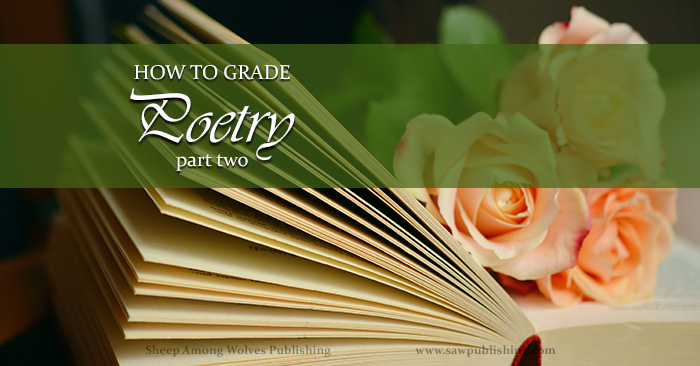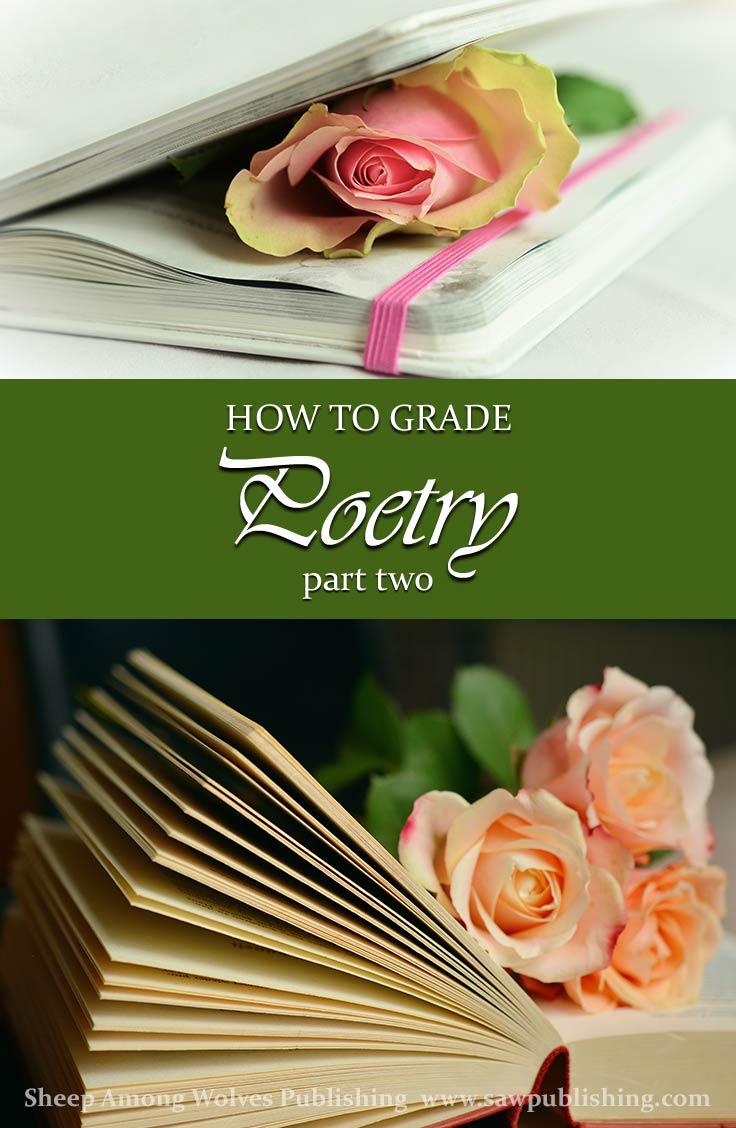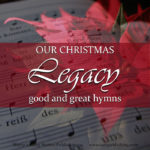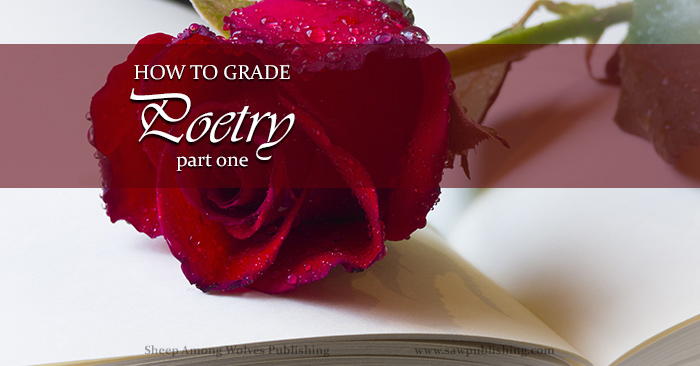How to Grade Poetry: Part Two
 Have you ever assembled a child’s toy with bad instructions?
Have you ever assembled a child’s toy with bad instructions?
That question sounds too negative. Let’s reframe it: Have you ever assembled a child’s toy with really good instructions?
By this point I suspect you have two images in your mind. The first represents an experience called up by the first question, and the second represents another image called up by the second question. I am making a long shot here, but might I dare to suggest that the second image is connected with a much shorter adventure than the first?
Last week I introduced you to the Good and Great Poetry Grading Worksheet. It came with a few basic instructions, but I recognise the fact that using this worksheet is a quicker, smoother, and more enjoyable experience if you have a clear grasp of what each segment is aimed at evaluating. The Good and Great Poetry Grading Worksheet asks you to answer 10 questions—5 relating to literary qualities, and 5 relating to spiritual ones. Let’s take a brief look at each of those questions.
The GREAT Questions
 These are questions that help you evaluate the literary qualities of the poem you are grading.
These are questions that help you evaluate the literary qualities of the poem you are grading.
How accurate is the rhyme?
This is a fairly straightforward question. Accurate rhyme requires the rhyming letters or syllables to be pronounced absolutely the same way, for example: cat and mat; mother and brother. It is pronunciation, not spelling, which counts in evaluating true rhyme. For example, the words love and move, although commonly paired in many poems, do not represent accurate rhyme as commonly pronounced.
This test of pronunciation does make it necessary to consider the writer’s potential accent in evaluating the accuracy of his rhyme, since there are certain words which do vary with dialect.
How accurate is the metre?
Metre is comprised of two components: the number of syllables in a line, and the emphasis placed on those syllables. Both of these attributes should follow an established pattern that is repeated from verse to verse.
Metre is one of the most straightforward (albeit occasionally time-consuming) aspects of poetry to grade, since there is an absolute mathematical standard for comparison.
How well are the verses and ideas balanced?
There is not necessarily any one “right” way of balancing the ideas and verses of a poem, but it is unquestionably true that the choices made in this area are critical to the final strength of a poem. Proportion is a key concept here. An unbalanced poem will have certain matter crowded together into one area (often the concluding verse or verses) while rambling through comparatively unimportant matter in other areas. An outstanding poem will not only show a good distribution of subject matter, it will also contain a balanced proportion of striking thoughts and well-expressed lines. It is the whole poem, rather than a single verse, or limited selection of verses, that is a masterpiece.
How original are the thoughts contained in the poem?
A fresh idea, or a fresh slant on a familiar idea, plays a significant role in any poem. Particularly in writing religious verse, it can be possible to create an entire poem—even a structurally sound, spiritually accurate poem—simply by combining set phrases or set ideas. While there is nothing absolutely wrong with this style, the greatest poets are those who can offer us a unique slant or perspective on whatever topic they bring before our notice.
Verse two of “Hark! The Herald Angels Sing,” is a classic example of this.
How original is the expression of those thoughts?
Originality of expression helps to bring ideas home to the reader in a meaningful way. Some writers have the talent of taking even an old and well-worn idea, and presenting it to us in words that make it fresh and new.
For example, Anna L. Waring, in the hymn “Father I Know That All My Life,” describes the ideal Christian as possessing:
“A heart at leisure from itself,
To sooth and sympathize.”
The idea of taking time to give our attention to others is not necessarily an original thought—but clothed in this distinctly original wording the familiar idea gains a new and remarkable power.
The GOOD Questions
How well does this poem preserve the reader’s innocence regarding evil?
The Bible exhorts us to be “wise unto that which is good, and simple concerning evil.” (Romans 16:19) It is important for us to evaluate the innocence of the material we read. Even a Christ-centred perspective on a given topic may give us too many details of evil. A truly good poem keeps our minds “simple” regarding ungodliness.
How well does this poem actively promote good?
A poem may be innocent, without being actually good. While we might gain little harm from this “neutral” literature, we are not maximizing the potential of good and great poetry if we make neutral poems the staple content of our reading material. Good poems actively promote good. They are not only harmless—they are also helpful. They are not merely unconnected spectators, but actual combatants under Christ’s banner.
How spiritually challenging is it?
This question builds on the platform of the preceding one, but it embraces a slightly different dimension of the topic. For a poem to be truly beneficial to you, the individual person who is reading it, that poem is going to need to exert a positive influence on your life and soul. A spiritually challenging poem does just that. It spurs us onward in the Christian life, and it represents one of the highest forms of Christian poetry.
How well does this poem promote a healthy view of life?
I have a personal joke about the word “melancholy.” Not that there is anything necessarily wrong with the concept, so long as it doesn’t get out of control, but it represents a tendency which can easily spring up in certain classes of poems: the tendency to dwell unnecessarily—and unhelpfully—on the doleful side of life. This is just one example of an area in which a good poem is careful to promote a healthy view of the world. The things we dwell on are the things that form our picture of life. Truly good poems help to mould this picture in an accurate and healthy way.
How well does this poem honour God?
We come now to the consummate question of the whole worksheet. How well does this poem honour God? Because, ultimately, this is the final test. Our works, as well as ourselves, are intended to be to His glory. The ideal Christian poem glorifies the Lord, from first to last. This is at once the foundation, and the perfection, of a good poem—that it lives to the honour of the Maker of all.
Calculating the Final Grade
Grade calculations for the Good and Great Poetry Grading Worksheet are extremely simple. On each question, you are asked to select an answer from a scale of 1 to 10. Every point in the scale translates directly to a single point in the final score. If you got 10 points on every question, your final score would equal 100—translating to a percentage grade becomes literally a matter of adding the % symbol after the number.
If you prefer a letter-based grade, (A, B, C, D, etc.), you will need to convert your percentage grade using some standardized process. Below are a couple of helpful links.
GPA to Letter Grade Conversion
Whether you use a percentage-based grade, or a letter-based one, the Good and Great Worksheet allows you to arrive at a precise, accurate, and consistent score for any poem you choose to evaluate.
“How to Grade Poetry” Can Be That Simple!
Grading any form of poetry in a successful and reliable way will always require thoughtful analysis and judgement, but the quality of your “instruction manual” does a lot to determine whether the process is a straightforward exercise or a mind-boggling nightmare.
SAW Publishing’s Good and Great Poetry Grading Worksheet is designed to fill the role of the dependable instruction booklet, letting you evaluate poetry quickly, precisely, and dependably whether you are grading elementary assignments or critiquing established classics.
To download the worksheet (including permission to reproduce freely with credit to sawpublishing.com), click on the button below.
For an introduction to the basic principles of this tool, please see our previous post:

Is the impact of good and great hymns enough to be a priority in a busy December? Today we take a look at the incredible wealth of music celebrating Christ’s birth, and discover why we have a valuable legacy of good and great hymns to pass on the next generation.

Are you looking for a Christian high school poetry course, that combines a high standard of literary excellence with a strong commitment to Christ-centred content? SAW Publishing’s FREE 10 Weeks to Writing Good and Great Poetry is the place to start!

Do you read the books your children are reading? It’s a commitment that takes time and energy, but it’s also one which amply repays the effort!


